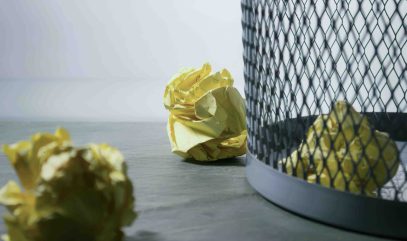What we buy matters
What we buy matters. Every product we buy and every service we use has some impact on the environment and our communities. We often spend time researching a product or service to ensure we buy the highest quality version that maximize the value to our lives. And it is worth a similar effort to ensure we buy products that have the most beneficial environmental and social impacts.
Two common products can illustrate why it is important to think about what you buy. And while water use isn’t the only thing we should be concerned about, water impact provides an easy way to think about environmental impact across industries:
- Do you know how much water is required to produce one gallon of beer? On average, seven to ten gallons of water are required for a brewery to produce one gallon of beer. (If you add in the water required to grow the grain, the amount of water increases significantly.) There are brewers making an effort to substantively reduce their water use. Hopworks Urban Brewery has reduced their water use to 3.39 gallons of water per gallon of beer. In addition to HUB, Fremont Brewing, and The Grain Shed are great examples of brewers who are focused on their environmental and social impacts.
- Do you know how much water is required to produce and maintain a pair of jeans? Levi Strauss & Co. does – they completed a full lifecycle assessment for a pair of 501 jeans in 2007 and updated the assessment in 2015 to cover three different pairs of pants (501® jeans, Women’s jeans, and Dockers® Signature Khakis). Their 2015 study calculated that one pair of 501® jeans consumes 999 gallons of water throughout their lifecycle. The 999 gallons includes the water to grow the cotton, to produce the fabric and make the jeans, and for the consumer to wash them (which only accounts for 23% (approx. 230 gallons) of the total 999 gallons used).
These examples demonstrate how consumers can evaluate some of their regular purchases. They also demonstrate why businesses interested in sustainability should understand their supply chains and the impact of the products they produce. Sustainability isn’t just about helping consumers make better choices, it is about helping businesses make better, more informed decisions as well.
The best way to understand the impact of your products is to complete a lifecycle assessment, which gives insights from cradle to grave. At a high-level, the lifecycle can be broken into five phases: Materials, Manufacture, Distribution, Use, and End of Life. While an individual business doesn’t directly control what happens in each phase of the lifecycle, they do have the ability to influence and inform the impacts in all five phases. To really make a difference, it is important to think about where materials come from, how the products are used, and what happens when those products end up in the landfill. By looking at the full lifecycle for their jeans, Levi’s® is able to work with existing suppliers, modify their internal processes, and educate consumers to reduce the overall impact that each pair of jeans has on the environment, not just the impact that Levi’s® has on the environment.
Levi’s® didn’t have to do this study – there was no regulatory body requiring them to understand their impact. Instead, they realize that consumers increasingly are concerned about sustainability and that consumers vote with their dollars. They also realize that investing in sustainability efforts helps ensure the likelihood that the resources they need to make their product, and that consumers need to purchase and use their product, will be available in the future.
Every business has a role to play. The first step is understanding the impacts of all your inputs and outputs. With that understanding, you can begin implementing solutions that reduce your overall impacts. And creating a Sustainability program that is integrated into your strategy will ensure those changes translate into meaningful benefits.
Consumer awareness is also important. Consumers don’t always have time to research what they buy before they buy it. Becoming a B Corp simplifies the research process for customers who aren’t already familiar with your company. When comparing similar products, an interested consumer can quickly review product labels, identify product(s) with the B Corp logo, and know that they are purchasing a product that aligns with their values. Not all decisions are that easy and gaining a full understanding of all impacts is still important. But with all the decisions we need to make on a daily basis, reducing the guesswork for customers can translate into increased sales.
Overwhelmed? No worries, we’ve got this! For the good.
Read More
The 1980s Called and They Want Their Business Case Back: Why we're rejecting the "business case" for sustainability
They say a rising tide raises all boats. But there isn’t any raising to be done when the tide no longer comes into the bay – all boats remain stranded. We are often asked about the business case for sustainability. For y
Protect Your Community or Organization with a Climate Action Plan
Introduction Our changing climate impacts every aspect of our lives—our economy, our communities, and the environment—in ways both visible and unseen. While scientists and environmental organizations have long recognized
Witnessing the world of sustainable business firsthand
As a young student with a passion for climate justice and sustainability, it always felt like a contradiction to pursue a degree in business. From what I had witnessed, businesses didn’t necessarily operate ethically. Mu
Interning with Purpose: My Journey with Measure Meant
From January to May 2024, I had the distinct pleasure of working with Measure Meant as an Operations Intern. As a graduating senior at Gonzaga University, I had not planned on pursuing another internship in my final seme




